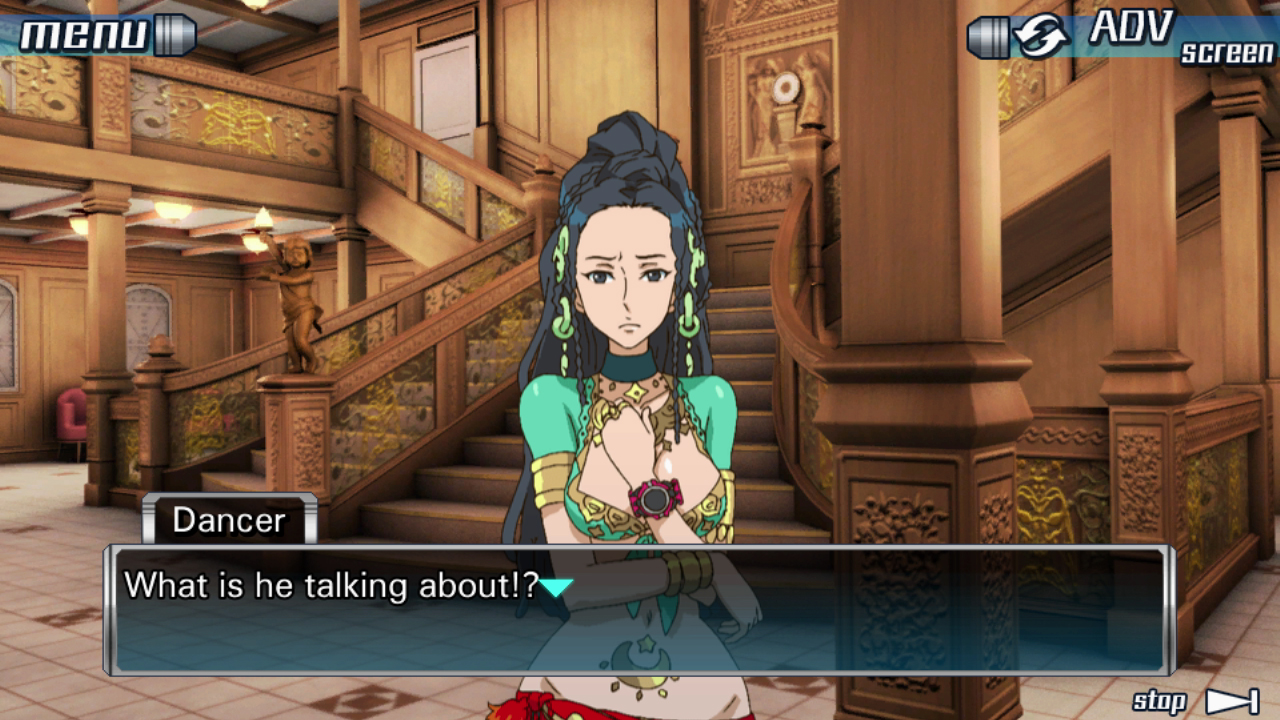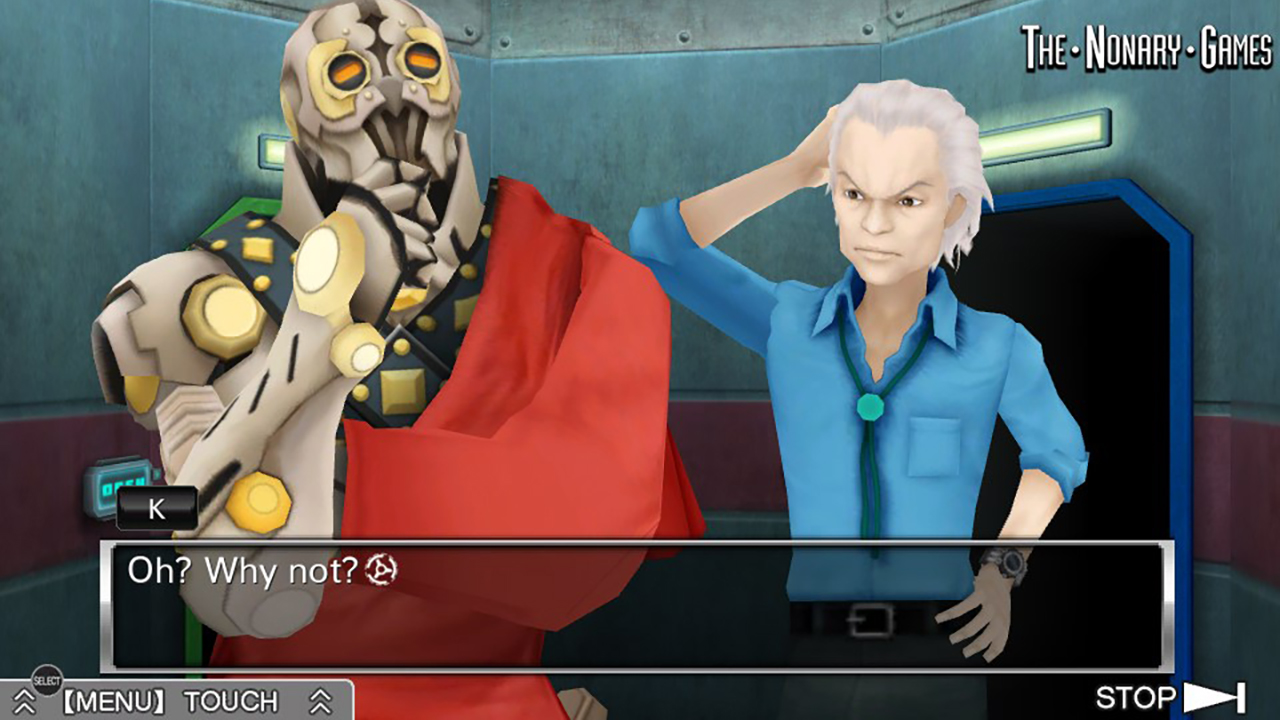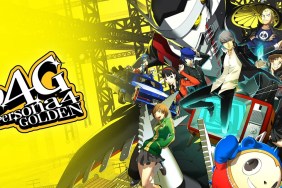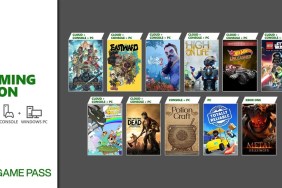You may have heard of Kotaro Uchikoshi’s esteemed Zero Escape series of escape-the-room visual novels, but unless you’re already a superfan then odds are you haven’t heard enough. The series was embroiled recently in a funding dilemma that prevented the release of its third and final entry (known for months simply as ZE3), a saga that finally concluded when immense fandom support and a retooled pitch to Spike Chunsoft finally brought Zero Time Dilemma to life as a Telltale-style cinematic endeavor that largely ditched its visual novel roots. Critics received it well and its existence is a blessing, but it also proved controversial; the mantra of its main antagonist Zero, “life is simply unfair,” seems embedded in the title’s very DNA, a fact unlikely to ever change.
Thankfully, The Nonary Games has nothing to do with any of that. Instead, it has to do with bringing two of the finest narrative adventures committed to cartridge back to limelight in their most pure, refined, and definitive forms. I had my worries, especially about the heavy overhaul being applied to 999, but after mere minutes of playing most fears were completely allayed. The Nonary Games is an astonishingly good package.
Seek a Way Out, Again!
If it wasn’t already clear, The Nonary Games is a Zero Escape twofur; included is the first game in the series, 9 Hours 9 Persons 9 Doors (originally released on Nintendo DS and later iPhone), and Virtue’s Last Reward, its followup that appeared on 3DS and Vita. Just like before, the player character is thrown into a twisted game of survival known as the Nonary Game in each instance, forcing him to navigate the environment, interact with suspicious, sometimes shady characters, and escape trap-rooms by solving devious puzzles and obtaining hints and clues. 999 takes place on a Titanic-esque cruise ship while VLR unfolds in a massive facility, and while doing so is not as critical as for finale Zero Time Dilemma, it’s highly recommended you play them in order. That being said, I originally played Virtue’s Last Reward first back in the day, and I adore the series all the same.
Each game has seen its share of modern tweaks and adjustments for The Nonary Games package, but the real overhaul has been applied to 999. Previously a text-only adventure, Spike Chunsoft and Aksys have generously supplied full voice acting for all characters, with dual audio, which amounts to hundreds if not thousands of lines of dialogue. The performances are generally excellent; my deep-rooted concern after Time Dilemma was that VLR’s uncommonly stellar voicework was a planets-aligning gift not replicable sans AAA budgets, but thankfully 999’s cast proved me wrong in short order.
It’s a testament to both the performers and the visual novel format that this is the case; there’s something about advancing scenes, text, and dialogue manually with a button press that brings together pacing in a way rarely replicated by cutscenes pre-paced and subsequently watched. I could write a book on the subject, but the short answer is that if voice acting and 999 in the same sentence concerned you, you’ve nothing to be afraid of. Additionally, the grafting of separate “novel” and “adventure” portions, swappable via toggle, is actually more a means of accounting for the lack of Nintendo DS’s dual screens. The change is not as jarring as you might think, and over time I welcomed it.
Not Your Average Anything
Also redone are the game’s 2D graphics, which have transformed from their pleasant but pixelated Nintendo DS source into striking, hand-drawn (or digitally traced) figures that fluidly animate between poses. The transformation is stark; I’d always preferred VLR’s polygonal style solely because it was technically superior, but with 999’s refresh I suddenly find myself second-guessing. Similarly, the game’s backgrounds on DS were originally pre-rendered, also likely due to hardware limitations.
What this means for The Nonary Games is that 999’s backgrounds, clearly resampled via the original off-cart versions from 2009, are far more impressive than any visual novel really has the right to be. It may sound like I’m gushing, but it’s deserved; niche, cult favorites are rarely awarded this kind of love and attention, yet somehow Uchikoshi’s pact with his death-game financiers has allowed this to happen. If you felt before like life was simply unfair, The Nonary Games reminds you that actually, it’s not so bad.
The tweaks for volume two Virtue’s Last Reward are modest in comparison, which is acceptable since its original 3DS and Vita editions hold up well enough even in 2017. I would’ve liked to see a refreshed UI like 999 was awarded, or some other bells and whistled to remind that The Nonary Games isn’t simply a port, but given the (needed) attention given to 999 I’m more than willing to accept that Last Reward has aged quite well in its own right anyway. Also borrowed from VLR and applied to 999 is a handy flowchart, a UI convenience that eliminates the need to replay scenes ad nauseam in search of the story’s true end. Traditionalists may disagree, but its a welcome addition.
Best of Both Timelines
The title’s plot, characters, and performances are unaltered, and just like before, VLR is in this reviewer’s estimation one of the finest, most engrossing and devilishly clever sci-fi stories ever told, certainly in videogames if not an even broader estimation. If the analogy helps, I recall seeing Christopher Nolan’s Interstellar in theaters with a friend who also enjoys Zero Escape, and upon leaving the theater we immediately looked at each other and said “Wow, I really appreciate Kotaro Uchikoshi. VLR did it so much better.”
The Nonary Games is something of a hybrid then, offering a superb full remake for its debut 999 and an acceptable high-quality re-release for its follow-up. The underlying quality of character and narrative in these titles cannot be understated; the mesh of gripping horror elements, sci-fi chicanery, and warm character moments ala Steins;Gate and other VNs is a feat not often achieved in any medium, and certainly rare in games. The puzzling and escaping portion is as fun and brain-bending as ever, and escapes do yield satisfaction, but to me the puzzles have always served as a smart pacing mechanism; use the other side of your brain, uncover clues and plot-lite, then return to the heavy stuff refreshed and feeling proud of yourself. It’s something more games should try.
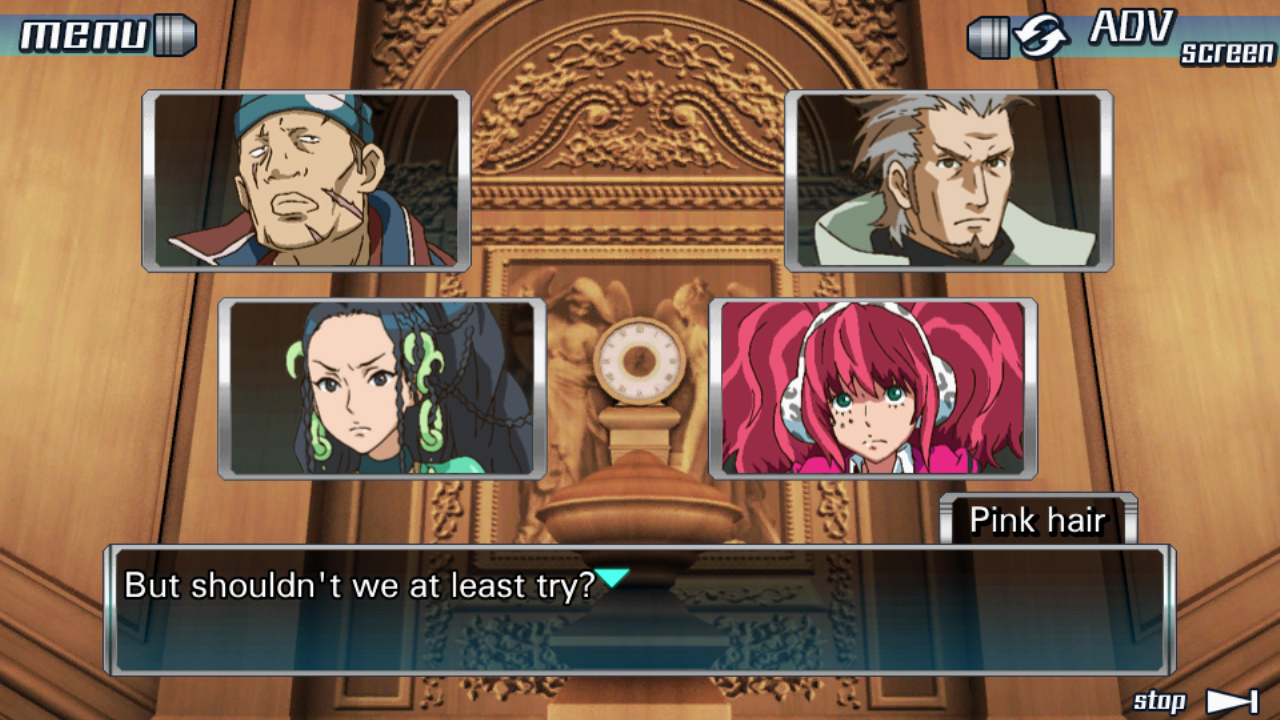
The world of Zero Escape is vast and involved, a rabbit hole one cannot truly fathom in advance, so to anyone unfamiliar with the series I can only suggest that you immediately try these games. Not credited often enough is Shinji Hosoe, the one-man wrecking crew of a composer who brings to Zero Escape its unsettling, emotive, and sometimes downright catchy or toe-tapping tones, whose presence Uchikoshi himself laudes as entirely transformative and essential. I wrote on composers recently and included Hosoe for that very reason; these are melodies, and in some cases just sounds or aural moods, that will stay with you long after the headphones are off, and will conjure memories of the uncertainty, fear, love, or anguish felt by Zero Escape’s cast each and every time it’s played.
Conclusion
There’s so much more to say, but given that this is a review of a compilation and not the two titles themselves, I’ll stop here and simply recommend The Nonary Games wholeheartedly. As a fan, I consider Spike Chunsoft and Aksys’ effort here one that exceeds requirement; a sterling overhaul of debut 999 and a worthy deliverance of its followup. For me similar attention to Virtue’s Last Reward would’ve warranted a “perfect” rating, but in its current form The Nonary Games is still far and away the best means of playing these games.
Uchikoshi has insinuated, speaking like a lawyer, that the Telltale style of the third Zero Escape game may not be his preferred method compared to the visual novels on display with The Nonary Games. It’s not clear whether the door has truly closed on Zero Escape in the long run, but in the short term I implore you, if you value plot, character, and sound in videogames at all, to invest in The Nonary Games as soon as possible. It’s a choice you won’t regret, and were we in a death game ourselves, I’d bet my life on it.
Griffin Vacheron is an Editor at GameRevolution. You can follow him on Twitter @novacav.
A Switch copy of Zero Escape: The Nonary Games was provided by its publisher. This game is also available on PC and PS4.
-
Gripping plot and narrative, complete with horror and sci-fi elements
-
999 has been fully overhauled in HD beyond expectation
-
New 999 voice cast is great, superb VLR voice cast returns
-
Two-for-one, definitive experience
-
Compared to 999, Virtue’s Last Reward is largely unchanged
-
This series is probably over 🙁

